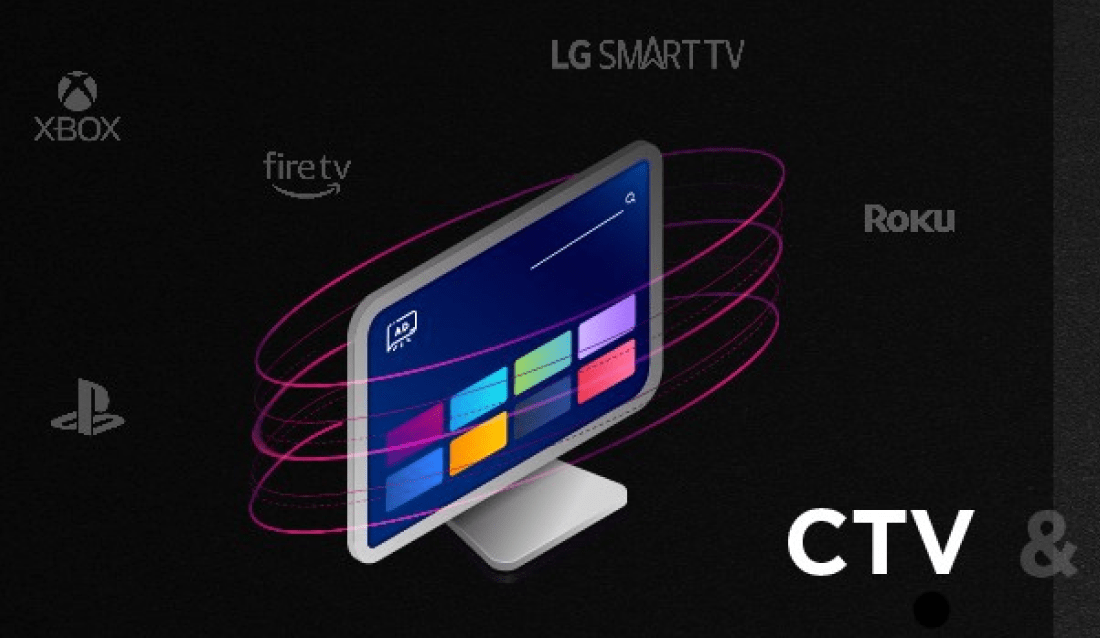The Future of Ads: Understanding OTT and CTV Advertising
04 Sep 2023 | Paid Ads
9 Mins

In today’s digital age, advertising is facing a significant transformation. With the rise of OTT and CTV services, advertising has also evolved to cater the needs of various brands. For example, the number of advertisements that we watched during the IPL 2023 on an OTT platform like JioCinema. With digital platforms like Disney and later JioCinema taking up the streaming rights and the easy and fast availability of internet, more viewers have moved from traditional broadcasting services to OTT platforms. According to The Economic Times, the IPL 2023 viewership on Disney (TV subscription) increased by 21% compared to the previous season.
Though the pandemic wreaked havoc in the lives of millions of people, it proved useful for the multiple streaming channels and thus indirectly, various brands. The use of OTT and CTV devices saw a rise during the pandemic with more and more people being driven to these streaming services due to the lack of other cinema experiences. According to Business Insider India, from 2020 to 2021, India saw a rise in the OTT audience by 20%. And according to the 2023 CTV trends report, 40% of consumers have installed an app after seeing a CTV ad for it. OTT and CTV appear to be the future of advertisement and as they give brands a new opportunity to endorse.
What are OTT platforms?
OTT platforms provide its users with digital content like movies, videos, series, music videos, etc., that can be streamed on TV, mobile, or tablet. OTT stands for over-the-top; which is symbolic of the service that goes over the top of the traditional cable providers; that is, providing the consumers more than the usual. It does not require the users to subscribe to traditional cable or satellite TV services. These platforms are stand alone and include Disney+, Hulu, Netflix, Amazon Prime, Eros Now, and many such streaming platforms.
What is a CTV device?
CTV stands for Connected TV devices. It refers to devices that can access and stream OTT material on their TV screens using internet connectivity. CTV allows streaming on devices like Roku, Apple TV, Chromecast, or gaming consoles, as well as through Smart TV integration. It presents the advertisers with new opportunities to reach their target audience in a more personalised and engaging way. Connected TV allows viewers to stream video content on their big screens just like traditional television but with the convenience and flexibility of internet connection.
What are OTT and CTV advertisements?

Image alt – CTV Advertisement Example
Image title – CTV Advertisement Example

Image alt – OTT Advertisement Example
Image title – OTT Advertisement Example
OTT and CTV advertisements are essentially digital video advertisements that are delivered through the platforms like Netflix, Hulu, Disney, Amazon Prime video through devices like smart TVs, streaming devices (Roku, Apple TV), gaming consoles, mobile devices, etc. Advertisers can leverage OTT and CTV to reach their target audience with targeted and personalised ads. These ads can be displayed before, after or between the streaming content, similar to traditional TV commercials. The shift from cable and satellite TV services also implies that there are more people using OTT and CTV services now. According to the Nielson report, 34.8% of screen time is accounted for by streaming services – OTT and CTV – while satellite broadcast only accounts for 21.6% screen time.
Why are OTT and CTV ads being called the future of advertisings?
OTT and CTV advertising are extremely advantageous and thus gives the brands a chance of reaching more audience, target specific demographics and measure the effectiveness of ad campaigns more precisely compared to traditional TV advertising.
1.Reach a niche audience
OTT and CTV allow for highly targeted advertising. Advertisers can leverage user data and advanced targeting capabilities to deliver personalised ads based on demographics, interests, viewing habits, and other relevant data points. This level of targeting provides advertisers with the ability to reach the right audience at the right time, enhancing the effectiveness of their ad campaigns. According to Eros Now-KPMG report, an average Indian OTT viewer spends around 70 minutes a day streaming videos on OTT platforms, with a frequency of 12.5 times a week.
OTT and CTV ads allow the marketer to build an audience based on their location, income, and other attributes and present advertisements to those viewers for a specific period of time. It also helps brands to collect data such as impressions, click-through rate (CTR), cost per click (CPC), budget, and conventions which can help them optimise their business.
2. Growing audience
The popularity of streaming services and CTVs is increasing continuously. More and more people are opting for OTT platforms and CTV devices, lending a larger audience base for advertisers to target. OTT ads retarget audiences through social media, audio ads and other such platforms, thus bringing more viewers from across channels. According to Times of India, the subscriber base of OTT streaming platforms is anticipated to surge to 50 million by 2023, further driving the OTT industry’s potential to reach a value of ₹12,000 crore by the end of 2023; representing an impressive 36% growth rate from the earlier ₹2590 crore that it earned in 2018.
3. Minimising ad spent waste, flexibility and cost effectiveness
OTT ads stretch the marketing budget and thereby reduce the spend waste. Connected TV advertising ensures that the ads are only shown to the people who are more likely interested in the brand and less likely to waste time or money on people who are not going to buy the product. OTT and CTV advertising offer flexibility in terms of budget allocation and campaign duration. Advertisers can adjust their ad spend in real-time, making it accessible for both small and large businesses.
Additionally, compared to traditional TV advertising, OTT and CTV ads can be more cost-effective, as they allow for precise targeting and ability to reach specific audiences. Budgets can be scaled up or down depending on the brand objectives. It avoids the excess of reaching people the brand doesn’t intend on targeting. As these ads are of short duration and are mostly non-skippable, they fetch a greater engaged audience. Whether the viewers are interested in the advertisement or not, traditional TV advertising requires the firms to pay. Meanwhile, in OTT and CTV advertising, viewers who only watch part of an ad or skip it altogether do not affect the cost of the campaign, and advertisers are charged only when the ad performs. This then reduces the cost.
4. Interactive and engaging formats
OTT and CTV offer more interactive and engaging ad formats as compared to traditional advertising. Advertisers can utilise features like clickable overlays, interactive elements, and calls-to-action within the ad itself. This interactivity can lead to higher user engagement and increased brand interaction. The use of demographics and viewing habits also help to personalise the ads and keep the audience engaged.
5. Increased audience retention
OTT and CTV deliver ads that are tailored to the preferences of the viewers, and thus they are more likely to engage with the ads and continue watching the content. Unlike the traditional TV advertising, where the ads are unrelated to the content being watched, OTT and CTV ads can be more contextual and relevant. When the ads feel more integrated and relevant to the viewer, the ads are less likely to be perceived as interruptions and thus leading to better audience retention.
Personalization enhances the ad viewing experience, as viewers are more likely to engage with content that resonates with their preferences. This in turn enhances the audience retention. There are fewer ads in OTT and CTV, and very few options for the viewers to skip ads, unlike the traditional advertisement broadcasting where the viewer can change channels, which ensures that the viewer watches the ad.
Why is it essential to use CTV and OTT advertising?
Staying in trend with the changing patterns of advertising and TV is extremely important. According to CTV trend reports, 98% of the brands believe that CTV advertising will be bigger than newspaper, mobile, or television advertising, hence proving advantageous for brands. With only 14% of the consumers willing to pay for ad-free CTV even if the prices are low, it gives the ads more viewers. The Big 5 streaming devices; Hulu, Disney, Netflix, Amazon Prime and Youtube, have catered to 82% of OTT streaming hours in just April 2020 according to Comscore, with the percentage increasing every month henceforth.
Traditional television viewership has been declining, with more people moving towards digital platforms and streaming services. CTV and OTT advertising allow advertisers to reach audiences who are consuming content on connected devices, and mobile devices. Comscore stated that the numbers of the OTT viewers increased dramatically (heavy [+6%], medium [+58%] and light [+44%]) thus giving the advertisers a chance to reach more viewers at viewing level more frequently. There are currently more than 424 million people on OTT and CTV platforms; and around 119 million who have subscribed to paid OTT platforms according to Business Insider India.

Image alt – Graph on Digital Advertising Reach To Households Through Different Devices
Image title – Graph on Digital Advertising Reach To Households Through Different Devices
How can the platforms be used to benefit your brands?
Endorsing your brands on an OTT or CTV platform might be challenging and hard to comprehend. But following a few simple steps can ensure that you stay on the top of the advertisement game.
Keep the advertisement short. This helps in catching the audience’s attention and ensures that their attention is not diverted. Make sure that the format of the advertisement fits all platforms. Users may view the ad from their phones, tablets, laptops or even TV; thus, it is important that the advertisement is suitable for all devices. Thirdly, the advertisements have to be relevant. The relevance of the ad helps the brand to create a personalised experience for the user and helps them connect with the ad and the brand.
For help with OTT and CTV advertising, and the best way to put forward your brand, contact us.
Other Posts

Log Out, Play On: Offline Games to Wind Down After a Long Day of Digital Hustle
We love the fast-paced world of digital marketing agencies, but sometimes the grind can be overwhelming. Juggling social media, SEO, and paid marketing strategies, analysing data, drafting, designing creative...

ROAS vs. POAS: Choosing the Right Metric to Drive Paid Digital Ad Performance and Profitability
In the world of paid digital advertising, performance metrics guide marketers in optimising campaigns, managing budgets, and maximising profitability. Two key metrics often debated in this context are Return...

The Rise of Short-Form Video: Is It a Fad or the Future of Social Media?
Social media has undergone a dramatic transformation over the past decade. From the text-heavy posts of Facebook’s early days to the image-centric culture of Instagram, we’ve now entered the...



